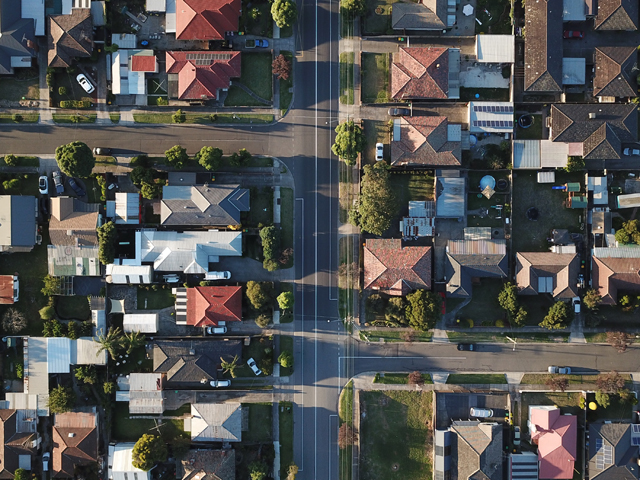Flood Zone Housing

Know your flood risk when you buy..
It's the great Australian Dream to own a home but Australia has been ravaged with bushfires and now recently hit with flooding, damaging many properties.
Many buyers' look at the cosmetics of a house, they will research which school catchment it is in and how good the local coffee shop is.
Anna Porter, Principal of Suburbanite, Valuer and Market Commentator believes all too often people don't think to, or don't know to check if it is in an area that is at risk of flooding.
Many people believe that if it isn't on the water's edge that it is safe, right? Wrong!
"There are many locations around the metro areas that can have flood inundation, even if they are no-where near a creek or riverbank," says Porter.
"Some can even be on a hill. For example, Wollongong just south of Sydney has many homes in the escarpment that are elevated above the ocean and townships that are in high risk flood precincts, due to the water coming down the creek banks of the mountains and cascading through properties on their way to the low laying land below,"
"This type of flooding can be very dangerous as there isn't a creek in sight, the flood waters get a lot of hydraulic force behind them and also collect debris along the way."
So how do buyer' protect themselves?
There is a good amount of information available to buyers if they know where to look.
"We suggest starting with local council, many councils have interactive flood maps you can access on line and if you aren't sure what you are looking at, you can call their flood management department or drainage department and speak to an expert," shares Porter.
"You should also get your conveyancer to review the flood notations in the contract of sale and help you understand them also,"
"It is also important to speak with your bank or broker prior to signing a contract, as some lenders won't lend on houses that have flood risk, or they will limit the amount they will lend through a lower LVR (loan to value ration) and this can directly impact your ability to borrow money on the property, and even the value."
Lastly, but most importantly, Porter says you should get your insurance company or broker to do a quote for you BEFORE you buy.
She warns you may find that the insurers have additional data on past flood events in the area and could premium load some locations.
"I have seen premiums as much as $15,000 per annum for some areas that have flood affectation, even though the locals say they haven't seen a flood in that street for decades," says Porter.
Porter also shares some tips on building in a bushfire prone zone.
"For anyone living in a bush fire prone area, or building a new home in a fire zone they should consider some of the following options to help make their home not only safer but more appealing to the market on resale," she says.
Here are Anna's tips:
Build with fire rated materials like hebel
Put in sprinkler systems on the perimeter and a water tank that can be used in case of fire
An underground 'safe room' that has been designed to protect people or property in a fire and has appropriate ventilation. This should be designed with guidance from a fire specialist.
Clear as much vegetation as you can around buildings to create a buffer zone
"All of this should be done in consultation with a fire consultant to make sure you get it right. Being fire smart is a 'must do' with a new build but home owner should also consider what they can do to retrofit some of these measures on existing homes in fire areas," says Porter.
"Firstly, to help protect you, but also will be a big step to overcoming objections from buyers when you do look to sell and will ensure the value of your home is maintained."
Photo by Tom Rumble on Unsplash
MORE



